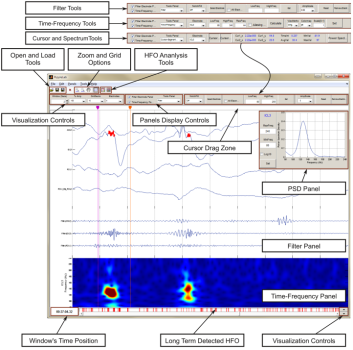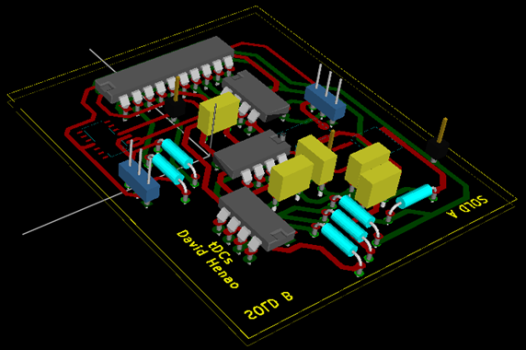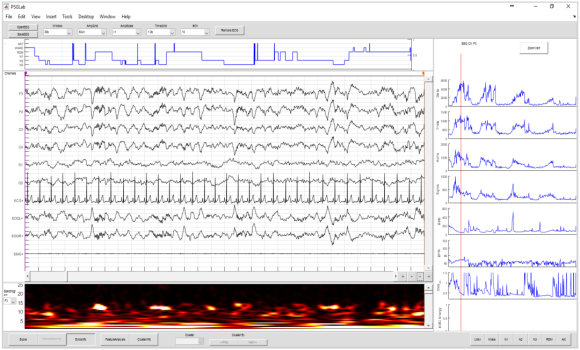Software & Device Projects
-
Ripplelab - A MATLAB tool for detection of brain High Frequency Oscillations
High Frequency Oscillations (HFOs) in the brain have been associated with different physiological and pathological processes. In epilepsy, HFOs might reflect a mechanism of epileptic phenomena, serving as a biomarker of epileptogenesis and epileptogenicity. Despite the valuable information provided by HFOs, their correct identification is a challenging task. A comprehensive application, RIPPLELAB, was developed to facilitate the analysis of HFOs. RIPPLELAB provides a wide range of tools for HFOs manual and automatic detection and visual validation; all of them are accessible from an intuitive graphical user interface. Four methods for automated detection—as well as several options for visualization and validation of detected events—were implemented and integrated in the application. Analysis of multiple files and channels is possible, and new options can be added by users. All features and capabilities implemented in RIPPLELAB for automatic detection were tested through the analysis of simulated signals and intracranial EEG recordings from epileptic patients (n = 16; 3,471 analyzed hours). Visual validation was also tested, and detected events were classified into different categories. Unlike other available software packages for EEG analysis, RIPPLELAB uniquely provides the appropriate graphical and algorithmic environment for HFOs detection (visual and automatic) and validation, in such a way that the power of elaborated detection methods are available to a wide range of users (experts and nonexperts) through the use of this application. We believe that this open-source tool will facilitate and promote the collaboration between clinical and research centers working on the HFOs field. The tool is available under public license and is accessible through a dedicated web site. -
Low-Cost, Open-Source Transcranial Direct-Current Stimulation Device (Tdcs) for the Modulation of Brain Rhythms
Neural activity can be modulated by an exogenous electric field generated by non-invasive transcranial stimulation. This technology is nowadays tested in research as an alternative treatment for different refractory pa- thologies from CNS. In this workwedesigned, fabricated and characterized a transcranial direct current stimulation device (tDCS) using integrated low-cost components, and experimental tests of the device were per- formed for its validation. From device design and fabricate the following stages were carried out: generation of the pulsed signal, amplification, current voltage transformation, and security stage. We generate the pulsed signal with the microcontroller msp430g2553, this signal was then amplified and sent it to a current source that controls the output current intensity employing a digital potentiometer. In parallel, microcontroller receives this signal converted back to voltage and act as a security device stopping stimulation when sensed magnitude is greater than 2 mA.We also developed a graphical interface allowing to easily set the stimulation parameters. The results of experimental tests exposedthat the current remainedconstant despite loads variation on the electrodes for different resistances and tissues. In particular, for a range of load resistance from 0 to 2.45 kOhm the device maintained a constant current between 0 and 2 mA. Tests on animal tissues showeda constant current behavior in tissues withimpedances in this range. Security tests verified that the microcontroller stopped the stimulation immediately after a current value greater than 2mAwas detected. This results validated the initialdesignparameters of fabrication, andwe think that the device could be used in different research or clinical applications. Compared to other existing devices, the developed one has the advantage of having a lower cost, it is programmable with simple free and open source software and can achieve stimulation parameters as reported in the literature. -
PSGLab - Matlab tool for sleep scoring
PSG-lab is a MATLAB user interface for the automatic and visual scoring of human and animal sleep stages. At difference of comercial systems, PSG-lab is a open source software that allows the user the parallel visualization of raw data and timefrequency plot for a chosen electrode. Furthermore, PSG-lab also displays the long-term computation and visualization of multiple band power along the recorded sleep time. Among the computed bands, it can be found the delta, theta, alpha, spindle and beta power fluctiuations together with the EOG energy, the BPM and EMG kurtuosis.




